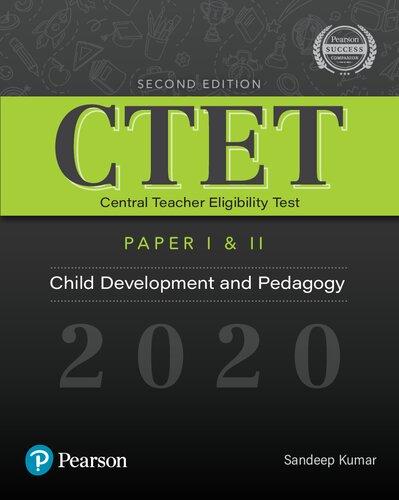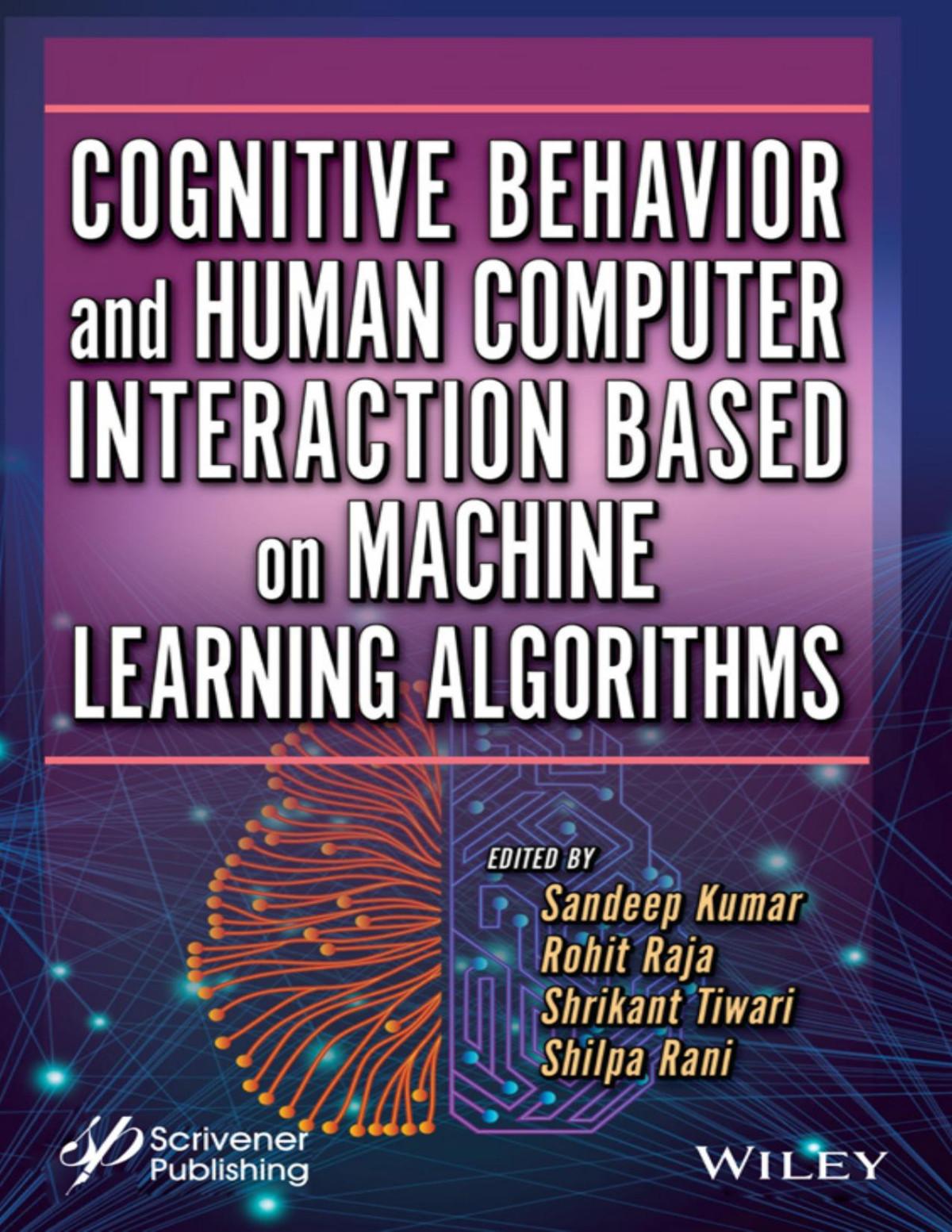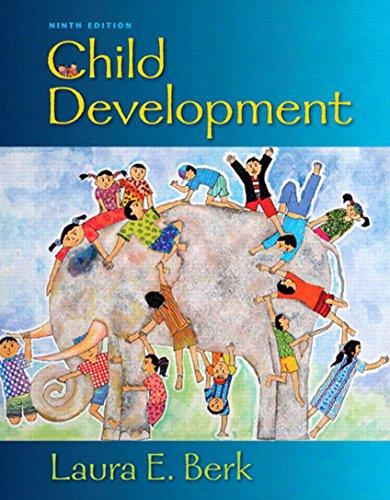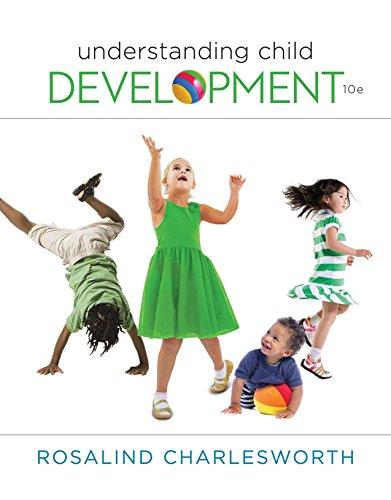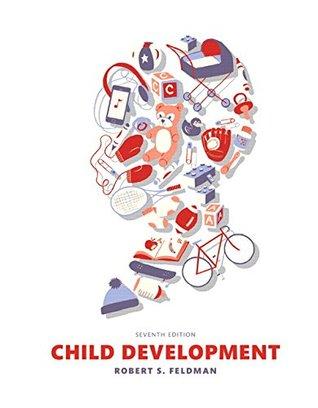1 Concept of Development
LEARNING OBJECTIVES
• Understand the concept of development in children and identify its different stages
• Appreciate the types of development associated with different aspects of a child’s life
• Establish the relationship between development and learning
• Develop an insight on the various principles of development
• Explore the relationship between heredity and development
INTRODUCTION
The term ‘development’, in its most general psychological sense, refers to certain changes that occur in human beings (or animals) between conception and death. However, the term is not associated to just any changes, but to those that appear in orderly ways and are relatively permanent in nature. It is a change where a person develops and changes from dependency to autonomy. Changes may also occur because of illness, tiredness or other such related causes but these are temporary. We cannot consider them as developmental changes.
Prenatal Period : Until birth
Infancy : Birth to 2 weeks
Babyhood : 2 weeks to 2 years
Childhood : 2 years to 10–12 years
Early childhood (2 years to 6 years)
Later childhood (6 years to 12 years)
Pre-Adolescence : Girls (11 years to 13 years)
Boys (12 Years to 14 years)
Adolescence : 13 years to 17 years
Later Adolescence : 17 years to 19–20 years
Adulthood : 21 years to 40 years
Middle Age : 40 years to 60 years
Old Age : 60 onwards
Development is a process that includes growth, maturation and learning. Growth denotes change in size, length, height and weight. In other words, it signifies a change in the quantitative aspect of a person. Maturation, on the other hand, is highly related to heredity. We can also understand maturation as accruing free from specific experiences. The learning process of development manifests as a change in behaviour arising out of past experiences. Though this notion has been challenged, it is considered very prominent in developmental psychology.
There are marked differences between growth and development. As has been mentioned above, growth is related to change in the physical aspect of a person and perceived as a quantitative change. Whereas, development stands for a series of changes leading to the orderly achievement of maturity and is qualitative in nature. Growth can be defined as one part of development, whereas development is associated with overall change in a person’s growth. Growth can be measured but development can only be assessed. Growth will bring about development, but it is not a pre-condition for development. That is, development can occur without growth.
Stages of Development
It is important to understand that every child is unique in terms of his/her development though there are some common characteristics shared by all children with few differences. The table given above shows the different stages of development and their associated functions, as seen in most children.
Among the different phases of life indicated in above table, three stages – early childhood, later childhood and adolescence – are critical for a child’s overall development and education and are described here in detail.
Development in Early Childhood (2–6 Years)
This is a stage where children like to do work independently. They do not like anyone to intervene in their work. Children show aggression, disobedience and antagonistic behaviour at this stage. They spend a lot of time playing with toys.
At this stage, children are ready for school. Though not exposed to mainstream education, they start going to preparatory classes such as pre-school and play school. Their social life improve, though they often prefer to keep themselves busy in their own activities. They become self-centric and find it difficult to understand others’ perspective.
Children are very curious at this stage; they love to experiment with the things they can lay their hands upon, sometimes even breaking their toys or other objects in the process. Children observe elders, cartoon characters and other people whom they interact with and try to imitate their behaviour.
Development in Later Childhood (6–12 Years)
This stage is known by many names such as troublesome stage and elementary school stage. In this stage, children tend to devote more time to their peer group than to their parents. They actively seek acceptance from peers. Very often, they fight with each other over petty things such as using each others’ toys, dresses or books, while playing or watching their favourite TV programme. This stage is very significant in the development process. As children start going to school, they engage themselves with academic activities. They start making friends at this stage and a few of these friendships may even continue in later stages. Whatever they learn and experience at this stage, greatly influence their later life, academically and otherwise. They develop their creative potential at this stage.
Development in Adolescence (13–19 Years)
This is the most critical stage of development in a person’s life. Children face many social, biological and personal changes during this stage. These changes make adolescence a difficult period to manage. Some people call this a ‘stage of stress and storm.’ This is a transitional stage where children learn new behaviours and strive to be socially accepted.
Adolescents are sometimes confused about their identity and are unable to make up their minds on whether that they are grown-ups or if they are still children. One of the reasons for this is the contradicting treatments they receive from their parents, who sometimes talk to them as adults while at other times consider them as children and refrain from discussing with them issues of grave importance. This sets the adolescent thinking and he introspects about his identity and his role in society.
Adolescents also face adjustment problems. Until their late childhood, parents and teachers helped them to solve their problems; but now, they have to do it on their own. This makes them apprehensive about failure and the resultant anxiety hinders their development.
Adolescence is also a stage of unrealism. Adolescents have desires and aspirations which are beyond their reach. These unrealistic desires become a cause of emotional instability. They have to take many important decisions during this time regarding their career and education.
James Marcia (1999) talked about four types of identity in adolescence namely, identity achievement, identity foreclosures, identity diffusion, and identity moratorium. Identity achievement occurs when a person explores realistic options and then chooses one of them. It occurs when children, after class 10 for example, are given a chance to choose their stream for future studies. However, when all decisions are taken by elders or parents, identity foreclosure occurs. Identity diffusion happens when adolescents reach no conclusion about what they want to do with their lives. They have no hope for the future and become alienated. Identity moratorium signifies identity crises. It refers to choices getting delayed because of one’s struggle with his or her identity. With numerous options open and professional counsellors to help, these days it is no more referred to as identity crisis.
Types of Development
There are different forms of development associated with different aspects of life and they play a vital role to make up a full personality. In other words, there are various aspects of life and various forms of development. We will try to understand these developments under different headings, but, they collectively contribute to the development of a child. We can understand these types of development as below:
Physical Development
This development is associated with development in one’s physical aspects such as height and weight. It is associated with quantitative changes that occur in the body. Mostly physical development takes place in cephalocaudal sequences, where development takes place form head to body.
Personal Development
All individuals are different and have their different ways of development. Under personal development, we explore how individual personality changes.
Cognitive Development
The ability to think, reason and analyse is known as cognition and development of these abilities is known as cognitive development.
Social Development
Family, school and community constitute the social context of children. Children have a specific role to play in these institutions. These institutions also influence child development. How children develop the social aspect of their personality is the core of social development. Emotional development can also be understood as social development, as it develops with reference to social life.
Moral Development
We face many conflicts in everyday life and move ahead after resolving them. But, how do we resolve these conflicts? How do we justify our actions and decisions? How far are our decisions moral or immoral? Resolving these conflicts are studied under moral development.
DEVELOPMENT AND LEARNING
It is important to understand the relationship between development and learning. Various perspectives exist in this regard. Some believe that learning leads to development whereas others contend that development leads learning (Piaget).
What should be taught at a particular level is decided in accordance with children’s developmental pattern. That is how we develop curriculum for a particular grade. Knowing and implementing suitable practices while teaching the curriculum help learners to learn effortlessly. Knowledge of developmental patterns also helps teachers and parents to understand their children’s level of learning.
Since developmental domains (cognitive, affective and psychomotor which can be understood as knowledge, attitude or self and skills, respectively) are interlinked and change in one domain affects the other, the learning process gets influenced by development. If a child has to face some developmental challenges, it might influence his/her learning acquisition. For example, a child who starts walking will get more space to explore the surrounding and hence, this exposure will play a significant role in his learning. He/she will be able to create more relations between different social aspects and try to relate them with his/her past experiences. Therefore, it is important for a teacher to make appropriate linkages between development and learning. This way, learners will be able to make some meaning in the given context. These relations will also enhance the scope to develop a better curriculum for the various groups of children as per their needs and abilities. If we explore more, we can understand this relation in a different way, where learning facilitates development and knowledge skills and other exposure facilitates development at various stages. It is important to mention that as there are cultural differences in learning, development may also be influenced by cultural conditioning.
Development proceeds in children at different rates and learning has a unique relationship with it. Learning and development complement each other in two distinct categories. The relationship between these two features is unique because, individual difference plays a great role for both learning and development. Recognition of these differences surely facilitates overall education of a child.
All psychologists, without any debate, accept that early development is very crucial for further development and learning. The kind of experience a child goes through in early stages has profound influence on his or her later life. Irrespective of whether the experience is good or bad, childhood happenings influence both learning and development. For example, a child who is introvert in his/her play school, may overcome this nature and become more confident at public forums when positive experiences are reinforced by interaction with his or her peer group. Thus, peer exposure will help a child to develop better.
It should be noted that learning should not only be based on rewards. Research suggests that the effect of rewards on learning is temporary. Children should be encouraged to be self-motivated in their learning. Such learning stays for a relatively longer time.
Development has a quality of predictability and this predictability helps us to understand the abilities of children. Awareness about these abilities facilitates children’s learning process because the facilitator becomes aware of the learner’s capabilities and is able to deal with the child accordingly. Learners who have teachers sensitised to their needs show great performance in their work.
Learning is also influenced by the social and cultural context. Family background, which includes social status, economic condition and educational condition, plays a significant role in the child’s development and hence, influences learning too.
The teacher should have a clear understanding about the importance of culture in development and learning. It does not mean that teachers should know about all the cultures. This is impossible, but, they should be sensitive enough to allow learners to use their own cultural experiences to develop a healthy perspective about the concept they are expected to learn. This will provide space for multiple perspectives in class. Teachers need to appreciate all perspectives emerging in the class with a positive attitude. This appreciation will lead the entire class to respect each other’s point of view.
Children learn actively, they are not passive entities. They make sense of their surroundings and learn. They learn through observation and interaction and in the process, they contribute to their own development. Their daily life experiences help in this process.
Interaction between biological maturation and the environment leads to development and learning. However, theorists have different views about how this interaction takes place. The physical and social environment in which a child lives, determines this interaction. Play has a significant role in this process. Play also has a role in the development of emotions, cognition and so on. Language development occurs because of interaction with society. Children play a lot of games in their younger age and communicate with each other freely in peer groups. This free communication is a very important tool of their language development. This oral language development provides base for later written language development. Children get space to express and represent their views, thought and feeling through play.
A safe environment is essential for development and learning. Children need to feel free to express themselves. It is the responsibility of the school, home and community to provide a safe and secure environment for children.
Principles of Development
In this section, we shall focus on the different principles associated with development and learning.
Principle of Change
As we know, human beings always think of moving ahead. Similarly, the nature and scope of development involved also changes with time. What a person was at age 5, will not be same at age 20. The person will have changed in many respects such as physical growth, understanding and maturation. The process of development in the person also changes correspondingly.
Principle of Significance of Early Development
A universally accepted idea is that early development is more important and critical than later development. Early development involves the experiences a child has during his or her young age. Healthy experiences will lead to healthy development while negative experiences may lead to an unhealthy development. Positive experiences can be provided by parents through love and caring. There are some capabilities, which develop best at some specific time of life, such as brain development, language development and so on. Parental love and care promote the mental health of a child and the child becomes less prone to behavioural problems at a later age.
Principle of Predictability
Development principles are predictable. We can know the particular age at which children will learn to walk, speak and so on. These predations help to decide many things for children. But, it is important to note that this principle does not mean that all children will develop in same way. There may be differences in the way each child develops because every child has a unique personality, which is developed on the basis of his or her socio-cultural context.
Principle of Interaction between Heredity and Environment
Development of child is a process that cannot be defined wholly based either on heredity or environment. Both have to play an important role in child development. There are arguments in favour of both. However, most of the psychologists agree that an interplay of these two factors leads to development. Where heredity decides or set some limits on development (mostly physical), environmental influences complete the developmental process (qualitative). Environmental influences provide space for multi-dimensional development through interaction with family, peer, society and so on.
Principle of Individual Differences
One the most important principle of development is that it involves individual differences. There is no fixed rate of development. That all children will learn to walk is universal, but the time at which each child takes his or her first step may vary. This difference may be attributed to heredity and environmental factors. It is important to understand Environmental influences provide these differences to provide better opportunities for development.
Principle of Expectations
There are some expectations from a child at each stage of development. For example during infancy, children learn to control physical actions; as toddlers, they learn to correlate the different concepts they have learnt; at school, they learn to interact with peer group and increase their social context. Therefore, there are some expectations associated with different stages of development.
Principle of Association of Maturation and Learning
Biological growth and development is known as maturation. Biological change involves changes in the brain and the nervous system, which provide new abilities to a child. Development proceeds from simple to complex. In the beginning, a child learns through concrete objects and gradually moves to abstract thinking. This transition happens because of maturation.
Principle of Continuation
Development is a continuous process. Children keep adding new skills to their abilities on the basis of their experiences. Almost all children follow a similar pattern in the sequence of acquisition of their skills. This sequence continues to move and add new knowledge and skills and help children to learn from their experiences. There is no time when we do not learn. Learning is directly related to development, which in turn, is a process that stops only with the life of a person.
HEREDITY AND ENVIRONMENT
Human development is affected by several factors. Different studies were conducted to understand the factors influencing human development and two factors were found to play a major role. They are heredity and environment. Heredity explains our growth pattern and determines how we grow older. We are similar to our parents, not only in terms of physical characters, but also in what we do. In the same way, environment also influences our learning, behaviour and personality. The similarities that we have with our parents depend upon the genetic makeup transmitted from the parents to the child. Heredity may influence many traits such as the colour of the eyes, height and susceptibility to specific diseases.
Similarly, development is also influenced by the environment. Environment, here, refers to the surrounding context, interaction with people, socio-cultural context, political and historical context of the person’s life and many other dimensions. The school has significant role to play in a child’s learning and development. Content, pedagogy, school environment, teachers and peer group contribute to the school environment of a child.
The debate of the importance of role of heredity versus that of environment is very prominent. Though studies have proved that we all are part and parcel of a combination of both, it sometimes becomes difficult to say which influences more, heredity or environment.
Heredity is a science where we study the role and importance of heredity in different aspects of development. The study of genes, how they are transmitted from one generation to another and how they influence a person, is the subject matter of human genetics. Conception occurs when a man’s sperm cell contacts an ovum. At the time of conception, the 23 chromosomes of sperms combine with the 23 chromosomes of ovum. Genes that are present in these chromosomes carry hereditary traits. Here, it is also important to know that mutation is a process when genetic structures are changed.
Environment refers to everything except heredity, which stimulates and influences a person. It includes the person’s family life, social life, economic life, peer group, education and so on. Studies have proved that the role of heredity and environment in development is significant.
This debate is also known as nature versus nurture, where nature stands for heredity and nurture stands for environment. Nature and nurture have their own role in child development. Two children in the same family getting the same treatment will still have different rates of development. Not only this, their intelligence levels will also be different from one another. This shows that heredity has a great influence. But, on the other hand, when twins are nurtured in different environments, they are seen to develop differently. Thus, environment also plays a significant role in child development.
The above discussion explains that development happens because of the interaction of environment and heredity where both have a significant role to play. While certain things are determined by heredity, others are developed by the environment.
Principle of Heredity
The union of 23 chromosomes of the male with that of the female is the cause for conception. Of these, 22 pairs of chromosomes are the same in men and women. These are known as autosomes. The 23rd chromosome decides the sex of the child and is known as sex chromosome. In females this sex chromosome is similar, but in men it is dissimilar. It is important to understand that there are two types of sex chromosomes, i.e., X and Y, of which X is a long and Y is a small chromosome. The female has only X chromosome while the male has both. When the X chromosome of the female combines with the X chromosome of the male, a female baby is conceived. When the X chromosome of the female combines with the Y chromosome of the male, it results in a male baby. Chromosomes are made of genetic matter. Each gene determines a different characteristic and we inherit them from our forefathers.
Some people have more X and Y chromosomes than normal. As we know, the normal combination is XY and XX. But sometimes abnormalities set in to create chromosomal combinations such as XXY or XYY or XO. In XXY abnormality, a person will look like a man but will be sterile (Klinefelter’s Syndrome). In XO abnormality, person will look like a female but will be sterile (Turner’s Syndrome). In XYY abnormality, the person develops tendencies of delinquency.
Role of Heredity and Environment in Development (A Few Case Studies)
There are various studies available, which prove that heredity affects the different aspects of development. These studies were conducted on identical twins and fraternal twins. Identical twins conceive when a single egg is fertilised to form one zygote, which then divides to form separate embryos. These twins will be genetically equivalent human beings. In the case of fraternal twins, two separate eggs are fertilised. These twins will share some common genetic characteristics but they will be unique from each other. Thus, identical twins share more characteristics than fraternal twins
Plomin and Petrill (1997) said that mostly twins live in a single family with parents and in the same environment. However, even when twins live in different families, they share many characteristics, proving the effect of heredity on development. These children have similar biological parents in terms of heredity. It is important to note that heredity and environment both have a significant role to play as far as development is concerned. Here, we shall discuss some studies of twin children and roster children and their development. These studies prove that the environment also has an important role in development.
Jim Lewis and Jim Springer: They are identical twins and both grew up in different families. They met with each other when they were 45 years old. Dr Thomas Bouchard (1980) of University of Minnesota studied them to understand their developed behaviour. Different tests were conducted on them with reference to intelligence, adjustment and other aspects of development. The finding proved that they have lots of similarities and differences too. Thomas concluded that both heredity and environment played a significant role in development.
Geselll and Thompsaon (1929), conducted a study on two identical twin girls. They were kept in similar environment. When they reached to age 14, their behaviour was studied and the finding was surprising. In many ways such as physical growth, appearance and intelligence, they both were similar. But in-depth study showed that there are differences in their behaviour, intelligence and so on. Gesell and Thompson proved that heredity and environment played a significant role in the development of these identical twins girls.
Oskar Stohr and Jack Yufe: Both were separated when they were six months old. Oskar grew up as a catholic in Germany, whereas Jack grew up as a Jew in Israel. Despite their different social and cultural backgrounds and the distance that separated them, they showed a lot of similarities when they met after more than 40 years. Their speech and thought patterns were similar. However, there were also differences, owing mostly to the difference in culture in which they were brought up.
Only identical twins can share exactly similar genetic characteristics. Popular notion about any kind of twins is that they will look alike, but, it is not true. Fraternal twins are ordinary siblings, as they do not have similar genetic formation. The possibility of genetic similarity is very high in identical twins as they develop from a single fertilised ovum.
Traits are decided by the interaction of different genes. The kind of traits a person has is not the outcome of a single pair of genes. It is the result of interaction of various genes. However, it is also a fact that traits which are based on the effect of combination of different genes are difficult to study.
Laws of Heredity
Johann Gregor Mendal (1866) contributed significantly in developing the laws of heredity. He propounded two laws of heredity, namely, ‘Law of Segregation and Dominance’ and ‘Law of Independent Assortment.’ Though he conducted all his experiments on plants, his laws are universally accepted. We can understand his laws in brief as given below.
Law of Segregation and Dominance
If the traits of one gene are not manifest in one generation, it does not mean that they die. They still survive and may come to the fore or become dominant in future generations. For example, if a person has a specific kind of genetic problem, there is a possibility that his son may not express that problem explicitly, but, his grandson may show it just as he does now.
Law of Independent Assortment
This law explains that distribution of one genetic trait does not influence the distribution of other traits. For example, in a white family, all will be white but their height may vary.
Importance of Heredity and Environment for Education
The above discussions clearly prove that both heredity and environment have a specific role to play in development and also in education. A balanced development occurs because of the combined role of heredity and environment. A child may have good heredity background, but if the environment in which he or she is brought up is not good, he or she may not develop adequately. On the contrary even if the heredity is not good, favourable environmental factors can help in a child’s development. Awareness of a child’s heredity and environment is important for a teacher. This awareness will help the teacher understand the reasons behind a child’s behaviour and facilitate his or her development. It also gives a complete perspective of the child’s tendencies, desires, problems and aspirations and helps the teacher to interact with the students as required.
SIGNIFICANT POINTS TO KEEP IN MIND
è Interaction of heredity and environment influences learning and development.
è Every aspect of learning and development is significant.
è The rate of development and learning differs based on individual differences.
è Early development is more significant than later development.
è Development moves from simple to complex.
è Play has a significant role in development and learning.
è There is a predictable sequence in development and learning.
è A safe environment and secure relationships provide better space for development.
è Social and cultural contexts influence both development and learning.
è There are different ways by which children can be trained to learn and develop.
è Chromosomes always occur in pairs. Genes are part of chromosomes and these determine the traits of a person.
è Every child carries 23 pair of chromosomes – 23 chromosomes from the father and 23 from the mother. One chromosome is different (sex chromosome) in men and this decides the sex of a child.
è We also should be aware that only one half of the child’s genes are from the parents while the remaining portion is inherited from ancestors.
è Teachers should have knowledge about the role of heredity and environment in development and learning. This will enable them to understand children better and enhance the student’s learning skills.
CHECK YOUR PROGRESS
1. What is the relationship between learning and development? Answer with suitable examples.
2. How is social development different from cognitive development?
3. Why are early life experiences more significant in development than later experiences?
4. How does heredity and environment influence development?
5. With suitable examples, prove that development patterns are predictable.
6. Discuss the role of socio-cultural context in development and learning.
7. Helping learners recapitulate or recall what they have already learnt is important because:
8. There are cultural diversities in an Indian class room. How can you make use of these diversities to provide better space for learning?
OBJECTIVE QUESTIONS
1. Which of the following statements is not true about friendship in adolescence?
(a) Friendship and adjustment are related notions. In good friendship, there is good adjustment; in bad friendship, there is a problem in adjustment.
(b) Friendship in adolescence is more intensive than any other period of life.
(c) In adolescence, females need more emotional support than males.
9. How does an understanding of the principle of development help teachers?
10. You are a teacher of class 10. What will you suggest to the parents in a PTA meeting for a healthy development of identity of their children?
11. How is identity achievement better than identity foreclosure? Why?
12. Rohan and Mukesh are identical twins. Mukesh was adopted by someone living miles away from Rohan’s family. Rohan and Mukesh met when they are at age 30. There are numerous similarities and differences between them. What are the causes of these similarities and differences? Take some examples hypothetically and explain where they will be similar and different.
13. How does the knowledge of heredity and environment of a child help teachers in their teaching?
(d) Cognitive achievement is associated with increased intimacy in adolescent friendship.
2. A study was conducted to see the effect of parenting style on learning and motivation. It was found that parents of children with high performance use _______________ style of parenting.
(a) authoritarian
(b) authoritative
(c) permissive
(d) None of the above
3. Human development has which of the following four domains:
(a) Psychological, emotional, physical and cognitive.
(b) Physical, social, cognitive and spiritual.
(c) Physical, social, emotional and cognitive.
(d) Spiritual, cognitive, emotional and social-psychological.
4. ___________ is an important principle of development.
(a) Discontinuous process
(b) The various processes of development are not inter-related
(c) It does not proceed at the same pace for all
(d) Development cannot be linear
5. Individual attention has to play an important role in the teaching–learning process because
(a) it provides better space to discipline each student.
(b) learning and development take place differently in learners.
(c) learners always learn better in groups.
(d) it is taught in teacher education programmes.
6. Human development is the result of:
(a) Only environment
(b) Only heredity
(c) Upbringing and education
(d) Interaction between heredity and environment
7. Cephalocaudal development takes place from:
(a) Head to body
(b) Body to head
(c) Inside to outside
(d) Outside to inside
8. Sonu and her father are playing with a toy car. Sonu’s father drives the car in front of Sonu. Sonu seems to be very excited to play and touch the car. Soun’s father, however, quickly hides the car toy behind his back. Sonu turns back from his father and starts playing a ball. What is the age of Sonu?
(a) 10 months old
(b) 1 month old
(c) 15 months old
(d) 6 months old
9. Humans have ___________ pairs of chromosomes.
(a) 55 (b) 60
(c) 46 (d) 23
10. A change in the genetic structure of a gene is called:
(a) Translocation (b) Duplication
(c) Inversion (d) Mutation
11. Twenty-two pairs of chromosomes are the same in male and female. They are known as:
(a) Autosomes
(b) Simlarsomes
(c) YY chromosomes
(d) XX chromosomes
12. A newborn baby will be a boy if it has:
(a) XX chromosomes
(b) XY chromosomes
(c) YY chromosomes
(d) Cannot be decided
13. “The traits of one gene that are non-effective in one generation may appear in the next.” This is the principle of:
(a) Segregation and dominance
(b) Independent assortment
(c) Transferability
(d) Genes transformation
14. When does a child start going to a formal school system?
(a) Childhood
(b) Later childhood
(c) Pre-adolescence
(d) Adolescence
15. A child cries loudly when he or she goes to school for the first time to show discomfort. But he/she does not cry when admitted to another school later, since he/she then feels only a little tensed. This change in behaviour represents which of the following principle of development?
(a) Principle of gradual development
(b) Principle of orderly development
(c) Principle of differentiation and inter-gradation
(d) Principle of sequential development
16. Which of the following statements is correct?
(a) There is no influence of environment on development.
(b) Family rearing does not affect the development.
(c) Interaction between genetics and environment influences development.
(d) Learners with similar ability will adjust similarly.
17. Development is the product of:
(a) Heredity and environment
(b) Environment alone
(c) Heredity alone
(d) Education
PREVIOUS YEARS’ QUESTIONS
1. Which of the following statements about intelligence is correct? [2019]
(a) Intelligence is hereditary trait that involves mental activities such as memory and reasoning.
(b) Intelligence is multi-dimensional involving several abilities not entirely measureable by intelligence tests.
(c) Intelligence is the ability to think convergently.
(d) Intelligence a relatively permanent change in behaviour as a result of experience.
2. Associating toys, articles of clothing, household items, occupations and colours with specific sex, is a demonstration of [2019]
(a) gender theory
(b) gender relevance
(c) evolved gender identity
(d) gender stereotyping
3. Which of the following is not a principle of development? [2019]
(a) Development is relatively orderly.
(b) Development takes place gradually over a period of time.
18. Development is:
(a) Linear
(b) Discontinuous
(c) Not inter-connected
(d) It does not occur or proceed at the same rate for everyone
19. Concept development is associated with:
(a) Cognitive development
(b) Emotional development
(c) Social development
(d) Moral development
20. Heredity is:
(a) Secondary social structure
(b) Universal social structure
(c) Dynamic social structure
(d) Static social structure
(c) Exact course and nature of development is determined at the time of birth itself.
(d) Individuals develop at different rates.
4. Several research studies show that teachers have more overall interaction with boys than girls. What is the correct explanation for this? [2019]
(a) Boys need more attention than girls.
(b) This is an example of gender bias in teaching.
(c) Boys are easier to manage than girls in the classroom.
(d) Boys have much more academic capabilities than girls.
5. Which one of the following statements is true about the role of heredity and environment? [2018]
(a) A child’s ability to learn and perform is completely decided by the genes.
(b) Good care and a nutritious diet can fight off any disorder a child is born with.
(c) Environment plays a significant role only in the child’s language development.
(d) Certain aspects of development are influenced more by heredity and others more by environment.
6. School is an institution of socialization of children where [2018]
(a) school routines occupy the central position
(b) school activities occupy the central position
(c) school teachers occupy the central position
(d) school children occupy the central position
7. The cephalocaudal principle of development explains how development proceeds from: [2016]
(a) head to toe
(b) rural to urban areas
(c) general to specific functions
(d) differentiated to integrated functions
8. A 6-year-old girl shows exceptional sporting ability. Both of her parents are sports persons, send her for coaching everyday and train her on weekends. Her capabilities are most likely to be the result of an interaction between:[2016]
(a) health and training
(b) discipline and nutrition
(c) heredity and environment
(d) growth and development
9. Which of the following statements about principles of development is incorrect? [2016]
(a) Development depends on maturation and learning.
(b) Development takes place due to a constant interaction between heredity and environment.
(c) Every child goes through stages of development, yet there are wide individual differences among children.
(d) Development is a quantitative process which can be measured precisely.
10. The unique interaction of _________ and _________ can result in different paths and outcomes of development. [2016]
(a) challenges; limitations (b) heredity; environment (c) stability; change
(d) exploration; nutrition
11. Match the following Principles of development with their correct descriptions: [2016]
Principle Description
(a) Proximodistal trend (i) Different children develop at different rates
(b) Cephalocaudal trend (ii) Head to toe sequence
(c) Inter individual differences (iii) In a single child, the rate of development can vary from one domain of development to the other
(d) Intra individual differences (iv) From the centre of body to outwards
(v) Progression from simple to complex
12. The period of infancy is from : [2015]
(a) birth to 1 year
(b) birth to 2 years
(c) birth to 3 years
(d) 2 to 3 years
13. Development proceeds from _________ to [2015]
(a) general → specific
(b) complex → hard
(c) specific → general
(d) dsimple → easy
14. Which one of the following is not the principle of child development? [2015]
(a) All development follows a sequence.
(b) All areas of. development are important.
(c) All development results from an interaction of maturation and experience.
(d) All development and learning proceed at an equal rate.
15. What is meant by ‘nature’ in ‘nature-nurture’ controversy? [2015]
(a) The environment around us
(b) Biological givens or the hereditary information
(c) Temperament of an individual
(d) Complex forces of the physical and social world
16. Which one of these is a principle of child development? [2015]
(a) Development occurs due to interaction between maturation and experience.
